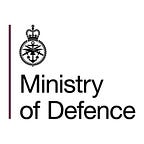An interview with the man commanding the college that started Prince Philip’s naval career
Captain Readwin is the Commanding Officer Captain of Britannia Royal Naval College that kick-started Prince Philip’s distinguished naval career
In 1939, the exiled Prince Philip of Greece and Denmark attended Britannia Royal Naval College (BRNC) which set him on the path to become consort to Her Majesty The Queen.
The BRNC was initially founded in 1863, and is at the forefront of the education and development of world-class Naval Officers in Dartmouth.
Hear from Captain Readwin as he speaks about the BRNC, and the impact HRH The Duke of Edinburgh has had on the College in Dartmouth👇
Can you provide some context as to what the BRNC is?
“The Britannia Royal Naval College (BRNC) was built in 1905, but officer training initially commenced on the river Dart in 1863. It became pretty clear that we needed to build a more permanent building. In 1905, the college opened here on top of the hill overlooking the town of Dartmouth.
What does the college mean to the Royal Navy today?
“BRNC is, without doubt, a centrepiece of our maritime heritage. Above all, BRNC is a centrepiece for training tomorrow’s leaders. Not just tomorrow’s leaders but of course Royalty has also been trained here.
“Princes Edward and George were trained on the river Dart and Prince Charles, The Duke of York and The Duke of Edinburgh were all trained here at the college.
What is your personal connection to BRNC?
“When each Officer Cadet arrives at BRNC, it’s a 29-week programme, and the aim of that programme is to get to the end of week 29 with a passing out parade.
“A passing out parade is a really special occasion, where the Cadets finally march up the front steps through the centre door of the college. The doors will then close behind them, and they are then commissioned officers into the Royal Navy.
“My own passing out parade was in April 1992, and the guest of honour on behalf of Her Majesty The Queen was The Duke of Edinburgh. It was an incredibly hot day, and The Duke I think was 30 minutes late, and we were waiting for his arrival. But as he arrived, there was an air of calm and confidence and an air of somebody who has been there before.
“He asked us questions, such as why did we join the Navy but more importantly where we were going, and indirectly he was almost talking to us with the experience of having served active duty in WWII, and talking to us about the opportunities ahead.
“Some thirty years later, I can say he was absolutely correct. The opportunity, experience and enjoyment of a career in the Royal Navy has been incredible.”
— Captain Readwin
What impact do you think that the BRNC had on The Duke of Edinburgh?
“The Duke of Edinburgh joined Dartmouth in May 1939 and was part of a special entry Cadet scheme set up by Sir Winston Churchill. He was due to be joining HMS Frobisher where the training should have been taking place but due to the impending war, the warship was being fitted to go out on operations, so he found himself all of a sudden here at BRNC.
“Not only did he meet the then Princess Elizabeth at BRNC, but he had a very successful period of training, and at the end was awarded the top Cadet or the King’s Dirk. So for him it was about setting the foundation here for a successful career, but of course it was also about being yourself, getting to know your strengths and weaknesses.
“One of the greatest legacies I believe that The Duke of Edinburgh took forward into his career from this environment and that he led by example throughout was his ability to talk with people. No matter what rank or rate, he was a sailor’s sailor, and that was a great accolade which I still take forward today and remind tomorrow’s officers the importance of leading your people with pride and passion but above all, being yourself.
“The motto of our leadership academy is ‘inspire by example’, and I can think of no greater example than The Duke of Edinburgh.”
— Captain Readwin
What happened after The Duke of Edinburgh commissioned from BRNC?
“The Duke of Edinburgh left BRNC in December 1939 and went straight to war. This is an officer who excelled under the challenge and the brutal conflict of war, and saw it right to the end, and that is an incredible legacy which he took forward into his peacetime service after the end of WWII, where his command leadership qualities were recognised and he was appointed in command of frigate HMS Magpie towards the end of his service. In 1952, he relinquished his active duty to take up the role of consort to Her Majesty The Queen.
“He had an incredible period of Naval service, and of course he kept a strong affinity with both the Royal Navy and the Royal Marines throughout the rest of his life. In 2011, Her Majesty The Queen bestowed probably the greatest honour to The Duke of Edinburgh by honouring him with the title Lord High Admiral, which for us was fantastic to see.”
“He had an incredible journey with an incredible service, not just in active service with the Royal Navy but throughout his life.”
— Captain Readwin
